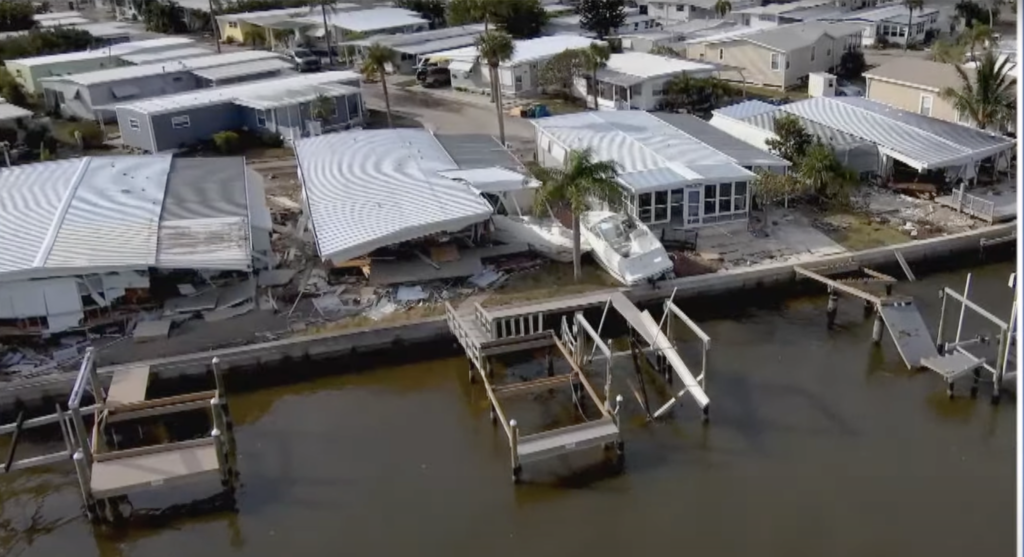Screenshot of video from Pinellas County of damage suffered in from Hurricane Helene.
Pinellas County Commissioners held an emergency meeting on Tuesday to learn of the situation on the ground in their community, which was devastated by the storm surge that flooded parts of the county as Hurricane Helene struck the area last Thursday evening.
“We experienced what we believe is the worst impact on our county we’ve seen in 100 years,” said County Administrator Barry Burton. “We’re looking at over $2 billion in residential damage that we know right now, and the recovery is just beginning.”
A small step in the recovery efforts was to begin at 4 p.m. Tuesday when all roads leading to the county’s barrier islands were scheduled to reopen to the public for the first time since Helene hit. Potable water service has been shut down on those barrier islands from John’s Pass south to Fort DeSoto.
As of Tuesday morning, the county had assessed 26,710 properties — 260 had been outright destroyed while another 15,923 have suffered “major” damage, requiring major repairs before residents can resume living in them. Another 6,320 properties had received minor damage and 4,207 had been “affected.”
In St. Petersburg, the county’s largest municipality, more than 5,000 properties are listed as having major damage, according to county statistics.
Cathie Perkins, the county’s director of emergency management, said that along with contacting hotels to see how many rooms might be available for those who are now without housing in the county, his staff is working with short-term rental platforms such as Airbnb and Vrbo to find available space, along with real estate property managers who may have availability.
Airbnb.org says that they are working with the Florida United Methodist Conference and contact centers in Florida and North Carolina to offer free, temporary housing for those who have been displaced.
“This is going to take time,” Burton told commissioners. “This is weeks, not days, and it’s going to require the efforts of so many in order to help our residents regain their life.”

